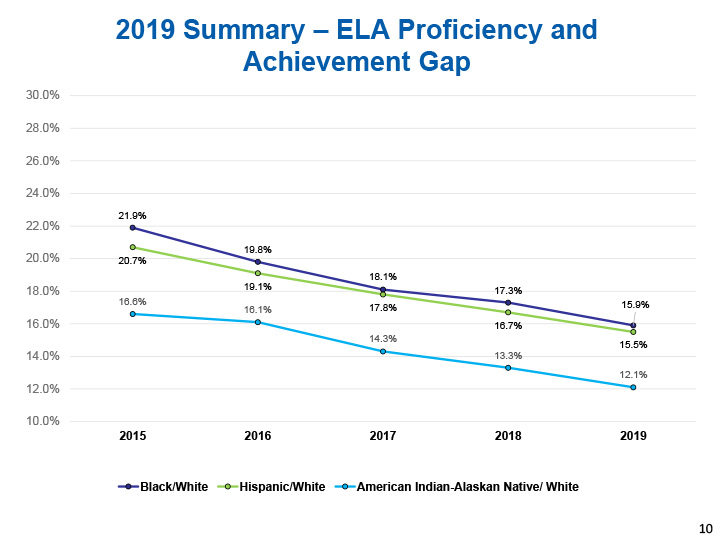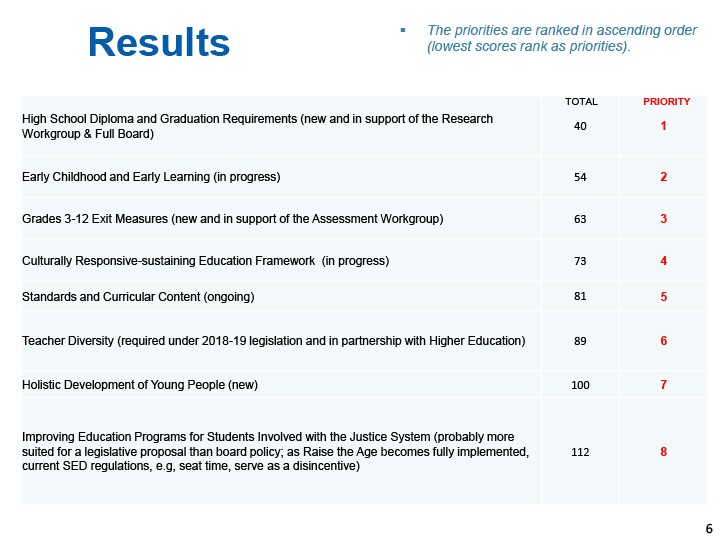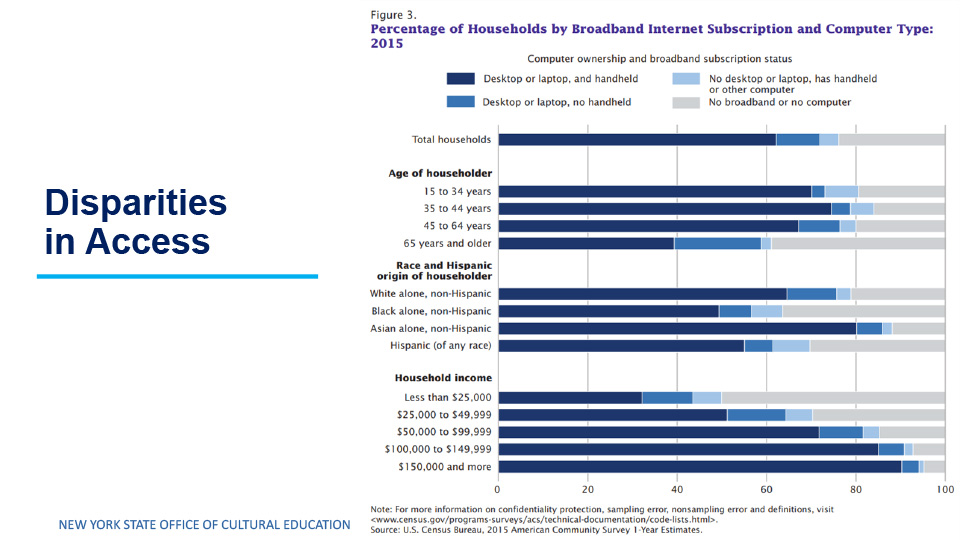Overview of the September Board of Regents Meeting
The first Board of Regents meeting of the new school year started out in an unprecedented way. Hundreds of very vocal protesters filled the halls and grounds of the New York State Education Department. The protesters were adamantly opposed to the disallowance of religious reasons for not adhering to required vaccinations for school entrance. Chanting and singing for the first half of the caused delays and adjustments to the agenda. As stated by Chancellor Rosa “Democracy is messy as we all know,” as she tried to manage the protesters and focus on the work of the Board.
Full Board
Presentation on What Success Looks Like for High Schools that have Dramatically Improved and/or Consistently Surpass the New York State Graduation Rate for Young Men of Color (YMOC)
The first item was introduced with a video of the My Brother’s Keeper symposium. The video demonstrated that the young men interviewed, clearly felt that the support networks and high expectations created by the MBK initiative was key to their successes.
Regent Norwood expressed his congratulations to Chancellor Rosa and Regent Young in their perseverance in obtaining funding for this initiative. In turn, the chancellor underscored the partnership with and strong support by Speaker Heastie.
The primary agenda item was a presentation on a study commissioned by SED through funding from the Bill and Melinda Gates Foundation on ten NYS schools that have been successfully raising graduation rates for young men of color. Regent Young introduced the agenda item stressing that the research presented underscores that there are pockets of success that can be brought to scale. In his opinion, the findings need to be disseminated extensively.
Findings from the study showed that these districts:
- Established a clear theory of action and mission.
- Maintained a high degree of fidelity to implementation and monitored established goals and data.
- Created a culture that believes that no student would fail – with shared accountability.
- Used targeted and high impact instruction – high levels of student engagement.
- Established sufficient supports and mobilized those supports immediately to ensure that no student fell in between the cracks.
Comments from the researchers stated how impressed they were with the amount of time students were in attendance. On a daily basis there were already 400-500 students in school by 7:00 am and stayed well into the late afternoon/evening. Many schools extended into weekends for tutoring and additional programming.
Discussion Around the Table
Regent Johnson asked if there were equal resources among the 10 schools and the panelist indicated that there were not. However, the researchers offered anecdotal information that a common trait among the 10 schools was to hunt down and maximize resources from many, many sources.
Regent Chin asked about findings regarding class size. Dr. Aronstein indicated that specific research on class size was not part of the study, but anecdotally, the researchers thought that it was more about establishing a system of supports than class size. Classes were considered more like a first step with every aspect of school supports folding in around the instruction to make sure that failure was not an option.
Other remarks by Regent Tillis and Regent Meade stressed the importance for establishing solid foundations at the middle school and forging parent partnerships.
Regent Young concluded the discussion with a quote by Ron Edmonds “How many effective schools would you have to see to be persuaded of the educability of poor children?” Regent Young stated that “we talk about culture but we do not talk about how to build culture.”
For more information on this item please use this link: http://www.regents.nysed.gov/common/regents/files/Full%20Board%20Monday%20-%20What%20Success%20Looks%20Like.pdf
Graduation Measures in NYS
A short presentation by Deputy Commissioner Kim Wilkins was provided to update the members of the Board of Regents on the initiative to examine graduation measures used in New York. Part of this work will be to establish a Blue Ribbon Panel and involve many stakeholders across the state over a two year period. This is a revised schedule based on input during the July BOR meeting which projected a one year review. Members of the Board felt that the one year review was too fast paced. The revised time line is as follows:
- November 2019 – January 2020: Regents and District Superintendents gather feedback from across the state, including meetings held in Regent Judicial Districts.
- February 2020: Establish the Blue Ribbon Commission (BRC) and draft meeting schedule.
- March 2020: Commission’s first meeting – the BRC convenes and defines the scope of its work.
- April 2020: Blue Ribbon Commission second meeting – The BRC identifies priority areas, “Big Questions” and a framework for moving forward. Draw from the BRC and Workgroups members to assign to sub-groups for priority areas.
- May 2020 – September 2020: Sub-groups meet.
- October 2020 – November 2020: Sub-groups develop proposed recommendations.
- Winter 2021: Sub-groups advance recommendations to the BRC.
- Spring 2021 – Summer 2021: The BRC finalizes recommendations and a report is prepared.
- Fall 2021: The Blue Ribbon Commission’s final report is presented to the Board of Regents for consideration.
Discussions Around the Table focused on procedural issues with strong emphasis that members of the BOR do not want the same kind of rollout as was undertaken for APPR or ESSA.
More information on this item may be found at: http://www.regents.nysed.gov/common/regents/files/Full%20Board%20-%20Graduation%20Measures.pdf
P-12 Subcommittee
Due to the delayed start and length of the above items, the original agenda for the meeting was revised and shortened. The following is a brief summary of the items and a link to the actual item:
Grades 3-8 ELA and Math Test Results
Results of the testing indicate a slight overall improvement and persistent gaps in achievement for most subgroups. The graph below provides a quick look at gaps in achievement:

Discussion Around the Table:
The following questions were raised by some members of the Board:
- Regent Collins – Are we going to look at the specific scores of students who come back to a public school from a charter school right before the testing starts? In Buffalo we are at our saturation point
- Regent Cea – Can we get a breakdown of the results for students with disabilities by disability classification?
- Regent Cashin – What are we really getting from these tests? We go up .5% and sometimes we go down. What are we really getting and what are we really learning?
- Regent Tillis – For every ethnic group we see girls ahead on every test. Does this hold for even the Regents exams?
- Regent Young – What are we doing for our Level 1 students? What happens after Pre-k?
The full item may be found at: http://www.regents.nysed.gov/common/regents/files/P-12%20-%20Measuring%20Student%20Proficiency%20in%20Grades%203-8%20English%20Language%20Arts%20and%20Mathematics_1.pdf
Item on Inclusive Athletic Activities
Proposed regulations regarding interscholastic athletic competition were introduced. The New York State Public High School Athletic Association (NYSPHSAA) and the Special Olympics New York organized a unique Unified Sports program. This program provides both students with and without disabilities to participate on teams that allow each player to contribute to a sport and a team. The uniqueness of this program was not contemplated when the regulations were written and thus need amending to address eligibility criteria.
Assistant Commissioner Chris Suriano introduced this item by indicating that there are 217 schools that have fielded 15,000 community members for such teams and that 58 percent of special education students spend 85 percent of their day in general education. The unified sport programs are a wonderful example of extending integration for all students.
The term Unified Sport may not be used in regulations as this is a proprietary trademark. The term “inclusive athletic activities” is used instead. The proposed regulation would establish exemptions from limitation on age and number of years of participation. A student ho is enrolled in grades 9-12 and has not graduated for high school may continue in inclusive athletic activities beyond age 19 and beyond four consecutive seasons.
The full item may be found at: http://www.regents.nysed.gov/common/regents/files/919p12d3.pdf
Board of Regents Priorities for P-12
The Board identified eight (8) policy areas for P-12 on which to focus and align their work. The next step will be to ask members of the Board to identify their top three priorities. The chart below shows the top rated priorities.

A link to this item is found at: http://www.regents.nysed.gov/common/regents/files/P-12%20-%20P-12%202020%20Priorities.pdf
Cultural Education Subcommittee
Libraries and the 2020 Census
Libraries will have an important role to play for the 2020 Census.
Why? 80% of households will be asked to complete the Census. The information obtained from the Census is vitally important. It is the basis for reapportioning congressional seats and allocating funding to communities which impact housing education transportation and a host of other social service programs.
However many households remain digitally divided in many ways. Access to broadband is not the only type of digital divide. Other types of barriers include; affordable broadband access to their home, appropriated devices, digital literacy, access to tech support and access to software. Unfortunately, 18-22 percent of household in NYS do not have broadband and 35 percent of households at or below an income level of $35,000 do not have broadband. The worst connected cites are Syracuse (24 percent w/o broadband) and Rochester (20 percent w/o broadband).
Libraries provide internet access to almost 20 percent of New Yorkers without broadband and are committed to digital security and online privacy to support community members understand the digital world. Their role in ensuring meaningful participation in the 2020 Census will be very important.

Day Two of the Meeting
The majority of the meeting was dedicated to recognizing the Teacher of the Year and the other finalists.
SAANYS congratulates Rachel Murat form Maine-Endwell as the Teacher of the Year.
The other finalists were:
- Mary Howard, a sixth grade teacher from the Veronica E. Connor Middle School, Grand Island Central School District;
- John Braun, a science teacher at East Northport Middle School, Northport-East Northport School District;
- Jeanne Lance, a fourth grade teacher at Watervilet Elementary School, Watervilet City School District; and
- Laura Macy, a Culinary Arts teacher at Steinmetz Career and Leadership Academy, Schenectady City Schools.
The dedication and commitment of these professionals is sincerely appreciated. We also want to thank each and every educator who work in this worthy profession.
For additional information or questions on any of the above items, please contact Cindy Gallagher, director of government relations at cgallagher@saanys.org or by calling 518-782-0600